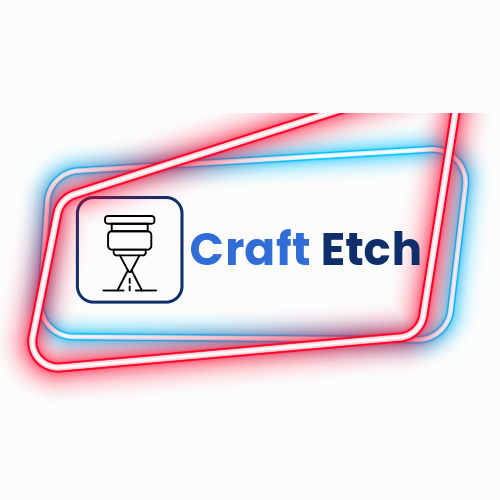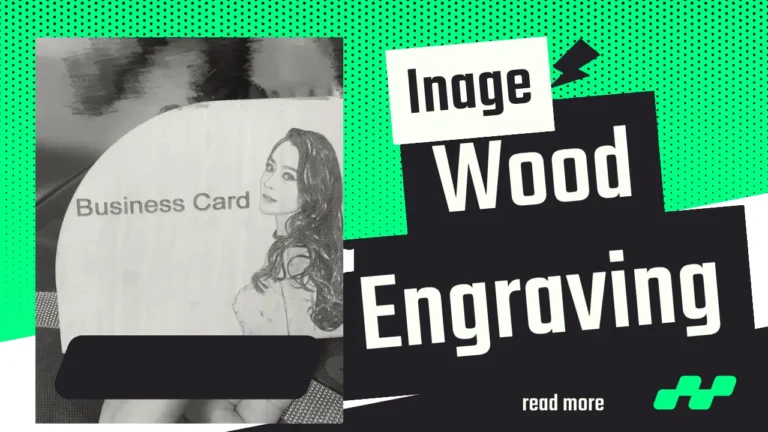Join Workshops
Physical Address
304 North Cardinal St.
Dorchester Center, MA 02124
Raster Engraving vs. Vector Engraving [5 main differences]
Raster engraving is a process where the laser moves back and forth across the material, pixel by pixel, much like a printer, ideal for detailed images that require shading and gradation. Vector engraving involves the laser following vector paths to trace out shapes and text, making it best for clean, precise line work and cut-through applications.
The primary difference between the two lies in the raster’s suitability for detailed, photorealistic engravings and the vector’s efficiency and precision for sharp, clean designs and cuts.
What is Raster Engraving?
Raster engraving is pretty similar to how an inkjet printer operates, moving line by line, back and forth across the material. The laser head sweeps horizontally, turning on and off to engrave the image into any workpiece, similar to how a picture is constructed with pixels. This method is ideal for detailed images, such as photographs or complex graphics, where shading and depth are crucial.
Below is an example of raster engraving. This is my daughter’s picture that i engraved in an wood piece using the Atezr laser.
![Raster Engraving vs. Vector Engraving [5 main differences] 1 Raster engraving](https://craftetch.com/wp-content/uploads/2024/07/Raster-engraving.webp)
Consider engraving a lifelike portrait onto wood. Raster engraving allows you to recreate the subtleties of light and shadow with varying dot sizes and laser power, resulting in a more nuanced, photorealistic image. However, because of its dot-by-dot approach, raster engraving can be time-consuming, especially for larger areas. For example, the above picture took almost 2 minutes to complete using a 10W diode laser, 60% power, and 22 mm/s engraving speed.
What is Vector Engraving?
Vector engraving, on the other hand, is like following a path with a pen on paper. The laser traces the outlines of shapes and characters directly, based on vector paths created in design software. a perfect example can be writing a quote where the only borders of each letter are engraved.
Here’s a vector engraving example:
![Raster Engraving vs. Vector Engraving [5 main differences] 2 Vector engraving](https://craftetch.com/wp-content/uploads/2024/07/Vector-engraving-1024x1024.webp)
This method is swift and precise, ideal for cutting out shapes or creating sharp, clean line work and text.
If you’re crafting a sign with intricate lettering or creating a geometric design on acrylic, vector engraving offers clean edges and consistent results. It’s particularly effective for jobs requiring cut-throughs or scoring, as the laser follows the vector lines without retracing its steps, making it more efficient for such tasks.
The differences between raster & vector engraving
Following the core differences between raster engraving and vector engraving.
Level of details
Raster is superior for capturing detail and shading, which makes it suitable for images with gradients and complex bitmap artwork. Vector is best for bold lines and clear, concise designs. If you want to engrave a picture, raster would be the preferred method. In comparison, vector engraving suits better for e engraving qotes or patterns.
Material compatibility
Raster engraving is more versatile across different materials, as it can adapt to the nuances of each surface. Vector engraving can sometimes be too intense for delicate materials but is excellent for harder substances where clean cuts are desired.
For example, raster engraving is ideal for complex graphics on materials like wood, leather, glass, and coated metals. It’s often used for personalized gifts, photo engraving, and decorative panels.
In comparison, vector engraving is suitable for precise line work, such as cutting out shapes, engraving clear text, and creating intricate patterns. It excels with materials like acrylic, paper, cardboard, and thin metals, and is commonly employed for making signs, stencils, and architectural models.
If you are trying raster engraving in coated material, that would be complex for you since coated metal like Yeti cups will not support a pixel-by-pixel approach. Moreso, straight patterns (filled or blank) suit better in such workpieces.
Laser cutting/engraving speed
Vector engraving is generally faster than raster because it involves continuous motion rather than the start-stop nature of raster’s line-by-line process. For large-scale projects or production work where time is a factor, vector engraving can significantly reduce processing time. For instance, the image I showed at the beginning of the article took 2 minutes to complete whereas the second vector image engraving took 35 seconds only.
Design complexity
Raster engraving excels with complex, multi-tonal designs that require gradations or a hand-drawn look. Vector is the go-to for designs that demand geometric precision, such as logos, stencils, and architectural models.
With raster, you can achieve varying depths by adjusting the power and speed of the laser, which is perfect for creating textured surfaces or 3D effects. Vector engraving provides a uniform depth, which is ideal for creating consistent lines and patterns.
In that case, with an infrared laser, the vector engraving method brings amazing results in tough materials like metal.
Conclusion
In summary, the choice between raster and vector engraving depends on the project at hand. Raster is your best bet when dealing with intricate graphics or when you need to replicate images with various shades and tones. Vector is the clear winner for tasks that require speed, efficiency, and precision, especially when cutting or engraving simple line-based artwork.



